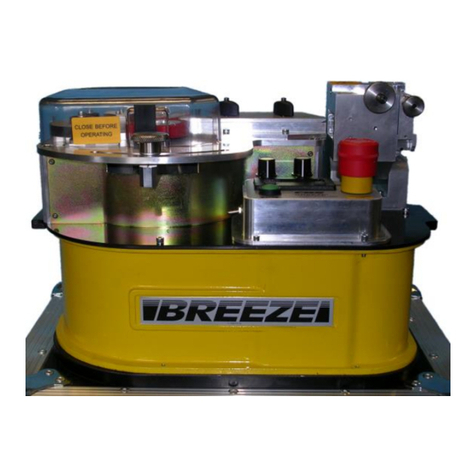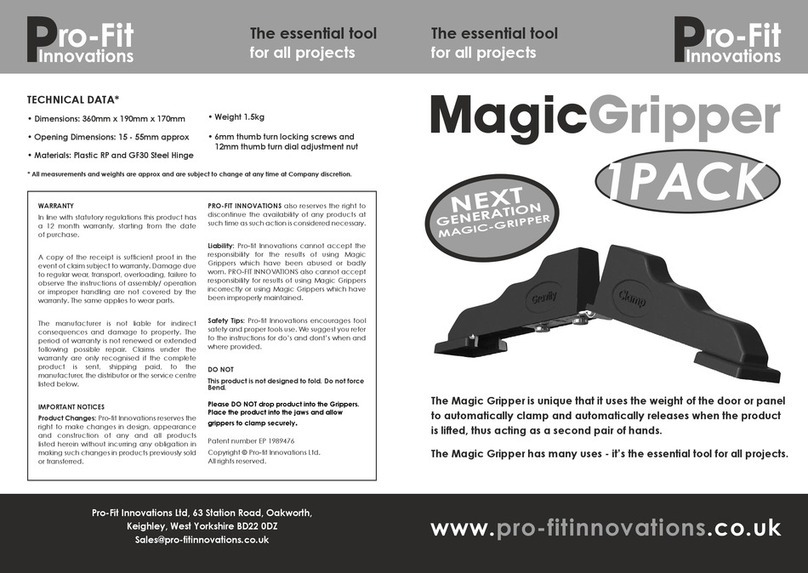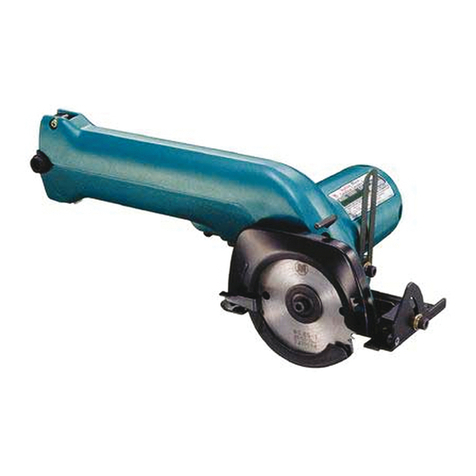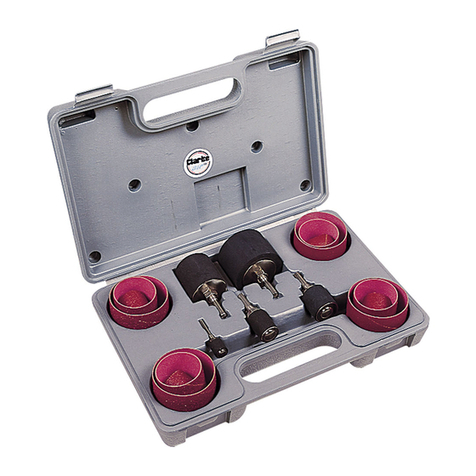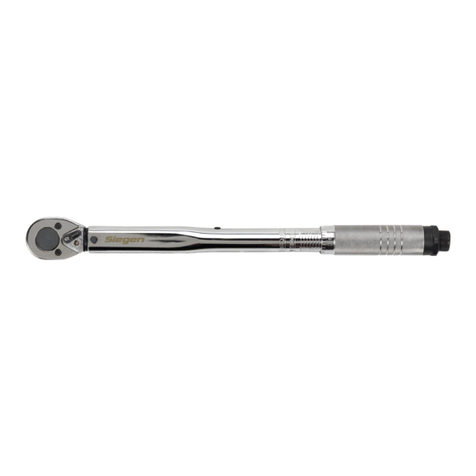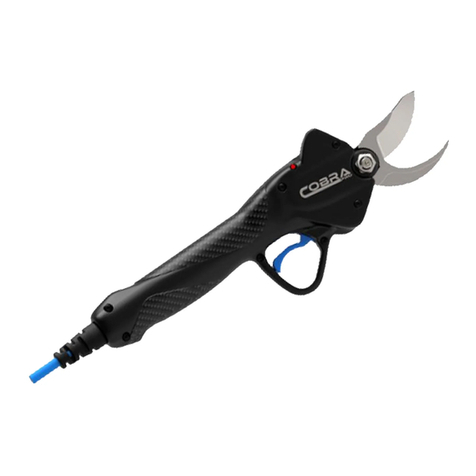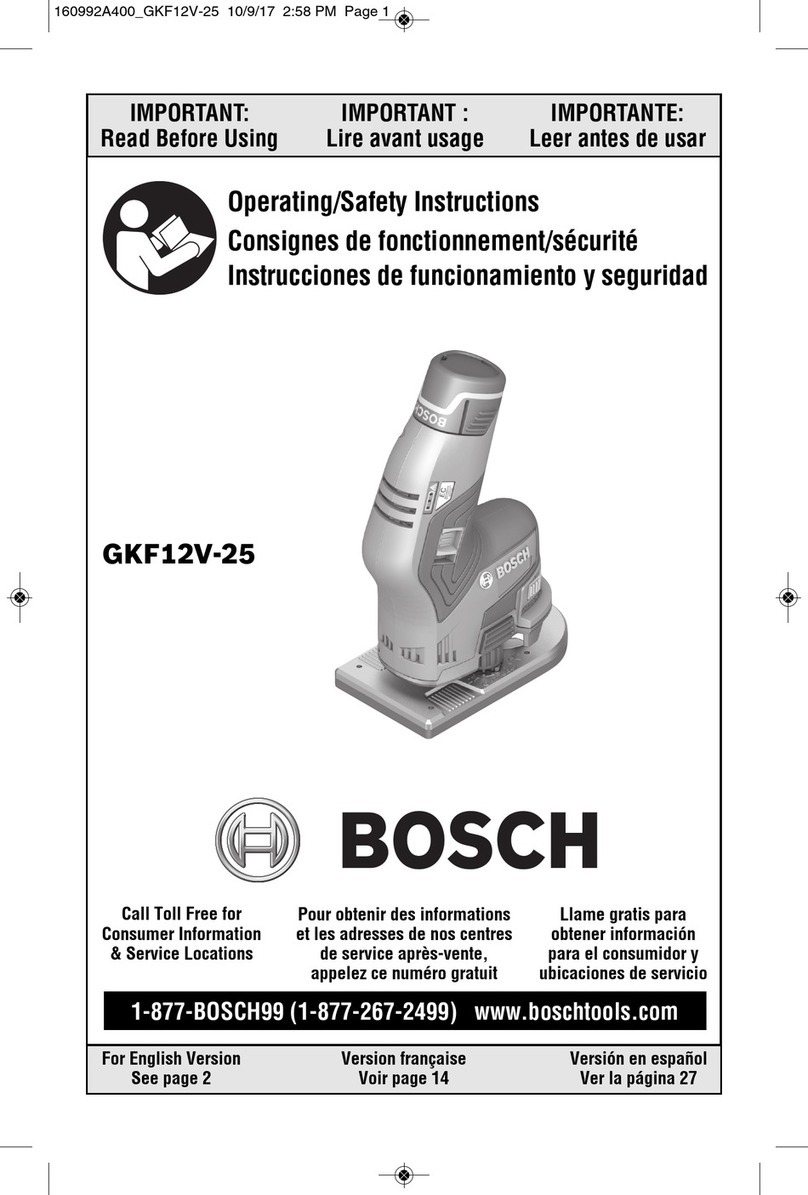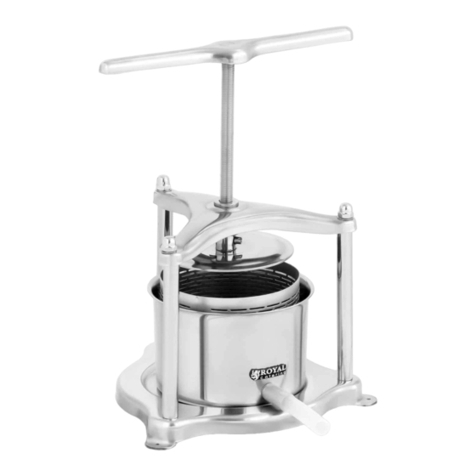CBS C-1800 User manual

CBS Products Ltd, Pillings Road, Oakham, Rutland, LE15 6QF, UK Tel: +44(0) 1572 723 665
Fax: +44(0) 1572 756 009 E-mail: sales@cbsproducts.com Website: www.cbsproducts.com
OPERATING MANUAL
C–1800 (ACCELAIR 2)
FIBRE BLOWING MACHINE
Copyright 2016 by CBS Products Limited
All rights reserved. No part of this publication may be copied, reproduced or
transmitted in any form whatsoever without the written permission of CBS
Products Ltd.

Page 2of 41
REVISION HISTORY:
Rev.no
Date
Details
Author
01
30.05.14
Original issue
C.Swallow
02
19.06.14
Power supply input voltages changed,
1.6mm blowing plate was buckle plate
C.Swallow
03
5-2-15
Reverse instructions added, photos
updated
C.Swallow
04
4-3-15
Air seal replacement instructions added
C.Swallow
05
25-8-15
Duplicate replacement air seal section
removed
C.Swallow
06
01-11-16
Revised Program –V2.0 documented
(multi-language support)
A.Sibun

Page 3of 41
Contents
1. SAFETY INSTRUCTIONS....................................................................5
2. CRITICAL POINTS THAT DRAMATICALLY AFFECT THE
OPERATION OF THE BLOWN FIBRE BLOWING MACHINE ............9
3. GENERAL DESCRIPTION ................................................................ 11
4. SPECIFICATION................................................................................. 12
5. MAJOR ELEMENTS ........................................................................... 13
6. OPERATING PROCEDURE.............................................................. 15
7. MAINTENANCE ................................................................................. 26
8. PROCEDURE FOR CHANGING THE BLOWING PLATES ........ 27
9. PROCEDURE FOR REPLACING THE BLOWING PLATE AIR
SEAL.............................................................................................................. 29
10. PROCEDURE FOR REPLACING TUBE CLAMP INSERTS AND
INFEED GUIDES ........................................................................................ 31
11. PROCEDURE FOR REPLACING TYRES ....................................... 32
12. CHECKING THE ODOMETER......................................................... 33
13. DETERMINING MAXIMUM TORQUE SETTING........................ 34

Page 4of 41
14. CHANGING THE DISPLAY LANGUAGE ....................................... 35
15. TROUBLESHOOTING GUIDE......................................................... 36
16. MONTHLY SERVICE –CHECK LIST ............................................. 38
17. CHANGEABLE PARTS AND ACCESSORIES ................................ 39

Page 5of 41
1. SAFETY INSTRUCTIONS
THIS EQUIPMENT SHOULD BE USED ONLY BY PERSONNEL WHO HAVE
BEEN GIVEN THE APPROPRIATE TRAINING AND WHO ARE COMPETENT
TO USE IT.
THESE INSTRUCTIONS ARE TO BE MADE AVAILABLE TO OPERATORS OF
THIS EQUIPMENT AT ALL TIMES, FAILURE TO OBSERVE THESE SAFETY
INSTRUCTIONS COULD RESULT IN SERIOUS PERSONAL INJURY AND/OR
PROPERTY DAMAGE.
WORK AREA AND GENERAL SAFETY
Read and understand the operation and maintenance manual
supplied with this equipment. Keep it in a convenient place for
future reference.
Keep children and untrained personnel away from this equipment
whilst in operation.
Keep all guards and safety devices in place. Do not operate this
equipment with guards removed or damaged.
Keep hands, feet and loose clothing away from moving parts.
Always stop the machine and isolate compressed air and electrical
services to carry out servicing.
Check machine before starting for worn or damaged parts. Check for
signs of loose nuts and bolts etc.
If machine is left unattended, ensure that unauthorised use is
prevented.

Page 6of 41
Never leave the machine unattended whilst in use.
Consider the use of safety barriers, especially when used in public
places, observe all statutory requirements for working environments.
Beware of pinch points involved with rotating components,
Beware of hot surfaces, machine uses compressed air.
When operating machine always wear appropriate safety clothing,
ear defenders, eye protection, hard hat, safety shoes and leather
gloves, machine operates with compressed air at up to 15 Bar (220
PSI).
Prior to installation ensure the tube route is connected properly.
Beware of exposed electrical contacts. Do not touch, or allow metal
objects to come into contact.
Machine may cause additional fire hazard if involved in an existing
fire due to compressed air.
The machine must be operated on firm ground.
Stay clear of pressurised airline and tube.
Only use the machine for its intended purpose, to retrieve fibre blow
air in the far end.
The compressed air supply must not be allowed to enter the air
chamber before the lid has been securely tightened.
Ensure the fibre exits easily from the pan, place the pan a sufficient
distance to allow the operator time to react should the fibre become
tangled.
The cable should enter the machine in a clean and dry condition.

Page 7of 41
FAILURE TO DO SO MAY RESULT IN PERSONAL INJURY OR DAMAGE TO
THE BLOWN FIBRE.
If a mains power supply is used and the connecting plug on the mains power
lead to the generator / (or supply) is unsuitable and requires replacement,
the new plug must be correctly connected observing the colour codes as
below.
IT IS THE RESPONSIBILITY OF THE USER TO ENSURE THAT THE
CONNECTIONS MEET THE ELECTRICAL REGULATIONS FOR THE
RELEVANT COUNTRY.
The Accelair 2 machine itself runs off a 24V supply connected via a Binder
Series 430 Socket. Should the connecting plug need replacement the Red
wire is positive (+ve) (Pin 1) and the Black wire is negative (-ve) (Pin 3), pin 2
is unused.
BROWN (LIVE)
BLUE (NEUTRAL)
YELLOW AND
GREEN (EARTH)

Page 8of 41
GENERAL PNEUMATIC SAFETY INSTRUCTIONS
The CBS Blown Fibre Blowing Machine is a pneumatic device, using
pressurised air to project fibre at high velocities. Please observe the following
precautions when operating the Blowing Machine:-
Compressed air can cause flying debris. This could cause personal injury.
Always wear personal protective equipment.
Ensure no personnel are in the manhole at the far end of the fibre run.
Severe personal injury may result.
Never open the machine when pressurised.
Only authorised, fully trained personnel should operate the air compressor.
GENERAL ELECTRICAL SAFETY INSTRUCTIONS
The machine has electronic and electrical power and control circuits. Electric
shock hazards exist that could result in severe personal injury. Observe the
following precautions to avoid electrical hazards:
Do not operate in water. Do not expose the machine to rain.
Do not remove cover of the mains power supply or the base from the
Accelair 2 machine. There are no user serviceable parts inside. Refer
servicing to qualified service personnel.

Page 9of 41
2. CRITICAL POINTS THAT DRAMATICALLY
AFFECT THE OPERATION OF THE BLOWN
FIBRE BLOWING MACHINE
Cord seals in air chamber correctly fitted to provide good sealing.
Correct blowing plates fitted.
Tube fully connected and pressure-tested.
Tube connecting fittings are suitable for operating at compressor
supply pressure.
Accelair 2 lid securely tightened.
Compressor capacity is suitable for size of tube being used.
Fibre pan must be close to the machine, the fibre should leave the
pan freely and enter the machine horizontally.
Air chamber, drive wheel and blown fibre must be clean and free
from debris, glass beads, sludge, dirt, water and lubricant.
The fibre must be hand guided into the machine.
Ensure the compressed air supply is not applied to the fibre until
approximately 30 metres of fibre has been installed or the machine
begins to slow down.
The compressed air moisture content needs to be carefully
controlled, it should be dry enough to prevent moisture forming in
the tubes yet not so dry to cause a static build up –CBS Products
recommend the use of an air dryer with a bypass.

Page 10 of 41
DISCLAIMER
CBS Products Ltd takes care in the design of its products to ensure that the
cable is protected during installation. Due to the variety and different
methods of fibre manufacture the responsibility of checking the fibre
compatibility with the equipment lies with the operator. Therefore, CBS
products cannot accept liability for any damage to the fibre.

Page 11 of 41
3. GENERAL DESCRIPTION
The C-1800 Fibre Blowing Machine (Accelair 2) has been developed to
provide a simple to use and reliable fibre blowing solution. The Accelair 2 is
designed to fit a fibre up to 3mm diameter, thereby providing the complete
range of blown fibre installation solutions from one machine.
The Accelair 2 is a compact integrated fibre blowing machine benefiting from
full automation and fibre management; sophisticated fibre protection is
implemented to ensure the fibre mechanical and optical integrity is
maintained. The machine only requires a single 24V D.C. electrical supply
and compressed air to operate.
CBS Products Ltd has designed a range of accessories aimed at providing the
complete solution to blown fibre installation.

Page 12 of 41
4. SPECIFICATION
Fibre Compatibility: Up to 1.6mm with buckle, up to 3mm without
buckle
Blowing Speed: Manual control to 50 metres per minute
Compatible Tubes: Any size from 3mm to 10mm
Automation: In buckle mode machine is self-regulating
Air Supply: 15 Bar max working pressure complete with
suitable air conditioning (drying)
Electrical Supply: Universal mains power supply (supplied as
standard): 85-265VAC (47-63Hz) or 120-
370VDC input, 24VDC 2.2A output.
Battery pack and vehicle adaptor available
upon request.
Control: Remote user interface with backlit screen
provides all necessary information; including
current distance, speed, torque setting and
fibre status.
Supported Languages: English, French, German, Spanish, Portuguese
& Italian.
Machine size: H: 166mm D: 184mm x 120mm. Weight: 3kg.
Case size: H: 220mm D: 480mm x 430mm. Weight (all
in): 12kg
Environment: 0°C to +50°C (Usage)
-10C to +70C (Storage)

Page 13 of 41
5. MAJOR ELEMENTS
Drive Wheels
Lid
User Interface
Tube Clamp
Infeed guide
Blowing
Plates
Buckle Shuttle
Remote
Connection
LCD Display
Pressure
Gauge
Wheel
Opening
Handle
Buckle
Indicator LED
Lid Locking
Screws
Sight Glass

Page 14 of 41
CARRY CASE LAYOUT
Accelair 2
Machine
Remote
Unit
Tools / Accessories
Universal
Mains Power
Supply
Power
Wires
24V
Connection
Lid Locking
Screws
Air
Connection
Air Control
Valve

Page 15 of 41
6. OPERATING PROCEDURE
IT IS IMPERATIVE THAT ALL PERSONS USING, OPERATING OR
MAINTAINING THIS FIBRE BLOWING MACHINE:
HAVE RECEIVED COMPREHENSIVE TRAINING IN THE USE OF THIS
MACHINE
ARE COMPETENT TO USE IT,
AUTHORISED TO USE IT AND
HAVE READ AND UNDERSTOOD THIS MANUAL
CBS PRODUCTS LTD. CANNOT BE HELD RESPONSIBLE FOR MISUSE OF
THIS EQUIPMENT.
SETTING UP THE TUBE AND FIBRE
To begin an installation first we must connect the tube and fit the fibre
through the machine. A selection of changeable parts are available to suit any
combination of tube and fibre. Please consult sections 8, 9 and 10 for the
procedures to fit these changeable parts and section 17 for a list of available
parts.
Firstly it is beneficial and
recommended to install a fibre
blowing bead onto the end of the
fibre. Place the bead over the end of
the fibre and use a small set of pliers
to gently crimp it in place. Try to
deform the bead as little as possible
whilst holding it in place.

Page 16 of 41
Place the tube seal over the end
of the tube and insert into the
machine as shown with the tube
flush up to the air inlet and the
seal in the groove. Do not allow
the tube to protrude into the air
inlet as this will restrict air flow
and performance.
Close the tube clamp by pressing
downwards; a plunger will hold it in
place. Insert the end of the fibre
into the tube and position it
through the slot in the buckle
shuttle, if applicable.
Open the drive wheels as shown
and place the fibre in the
grooves on the buckle plate and
infeed guide.

Page 17 of 41
The wheels are sprung and will
automatically close and grip the
cable once the handle is released.
Ensure the fibre runs smoothly
through the machine and is placed
in all grooves as shown.
Carefully close the lid, ensuring
the fibre is not caught or
crushed. Tighten the thumb
screws to seal the lid.
NEVER OPEN THE LID OF THE MACHINE WHEN IT IS UNDER PRESSURE,
SERIOUS INJURY MAY OCCUR DUE TO ITEMS EXPELLED AT HIGH
VELOCITY.
CBS Products recommend the
use of a stop end at the end of
the tube route to arrest the fibre
at the end of the installation.

Page 18 of 41
FIBRE INSTALLATION
To begin an installation first power up the machine. With the remote unit
already plugged in, insert the power cable into the rear of the machine. The
LCD display on the remote unit should now power up with the following
display:
Select the option by pressing the
relevant blue button under either
YES or NO depending on the type of
installation you wish to carry out
and the plates fitted to the machine.
The buckle sensor utilises plates
with the buckle shuttle - this can be
seen in the photo at the top of the previous page. Should the wrong selection
be made this can be altered in the menu system, this is detailed later in this
section.
Once the selection is made, a confirmation screen is briefly displayed
followed by one of the screens below:
If a job has not been finished then it will remain active in memory and the
screen on the right will be visible. It is then possible to either resume that job
or start a new job. The blue buttons allow navigation through the menus and
the functions of these buttons are displayed on the screen. Starting a new job
will present you with the following display.

Page 19 of 41
The two dials control the torque
setting and speed. The maximum
speed of the machine is 50m/min.
Adjustment of the torque setting is
only relevant when installing fibre
with the buckle functionality
disabled.
This message will be displayed
if the buckle mode is selected
and the shuttle cannot be
detected. This is either because
the fibre is buckled in the
machine or because you are
attempting to install with a
straight plate but have not
disabled the buckle functionality.

Page 20 of 41
Should the incorrect buckle mode
be selected at power up select
‘MENU’ if not already there and
then select ‘SETTINGS’. When on
the buckle sensor option press
‘Change’ to alter this function. You
can then return to the menu and
resume active job; the error will
now have disappeared.
To check the buckle function and to
allow a viewing point for the fibre
CBS Products suggest a small length
of tube with a clear connector be
used in the machine first. Moving
the fibre in and out should be
possible; the screen should display
that the buckle shuttle is moving.
Table of contents
Other CBS Power Tools manuals
Popular Power Tools manuals by other brands
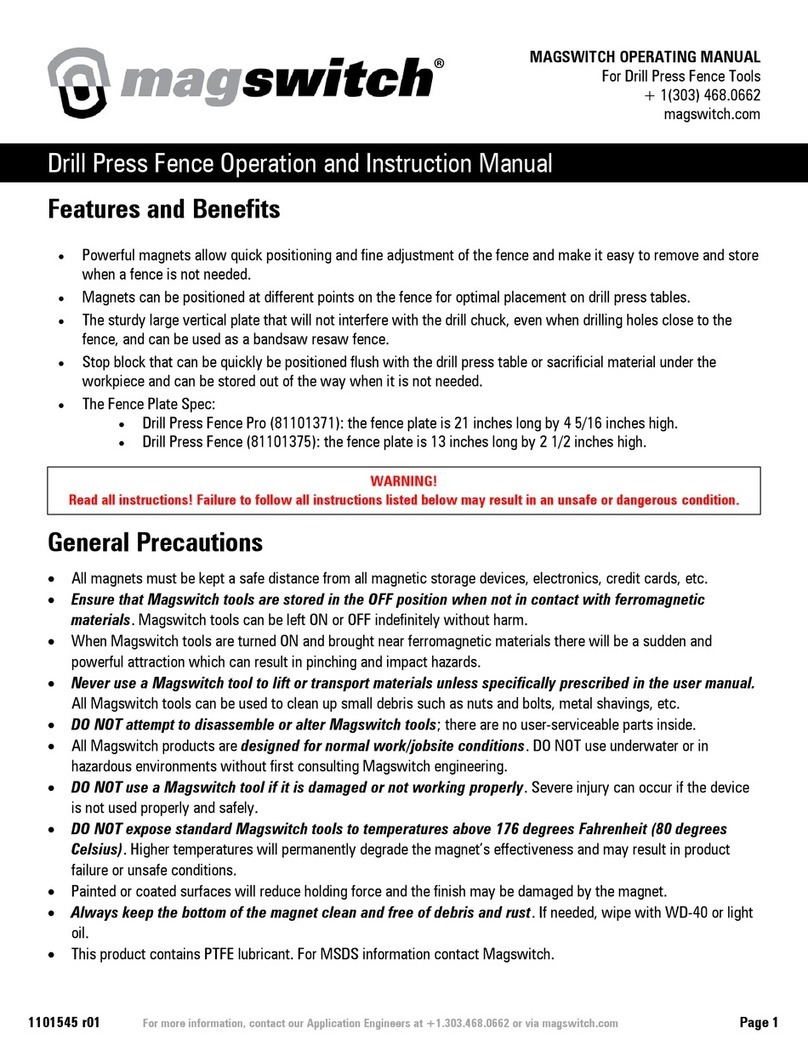
Magswitch
Magswitch 81101371 operating manual
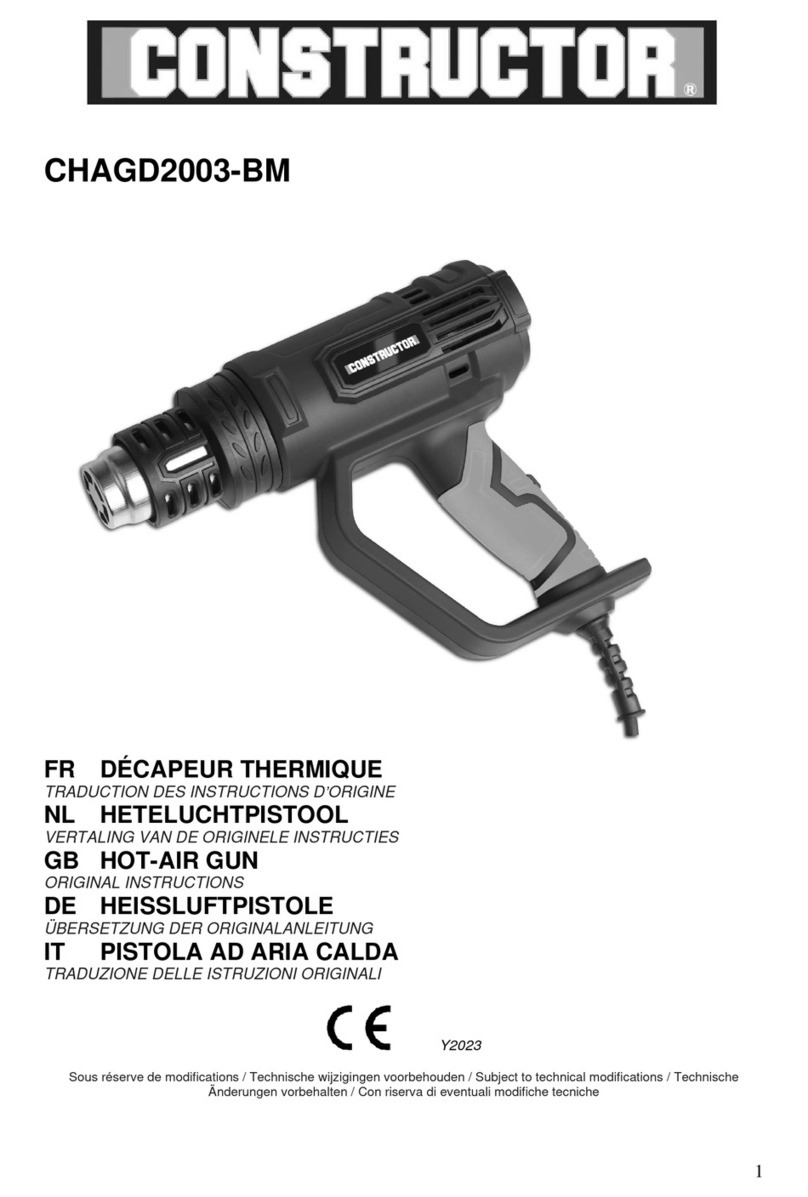
Constructor
Constructor CHAGD2003-BM Original instructions
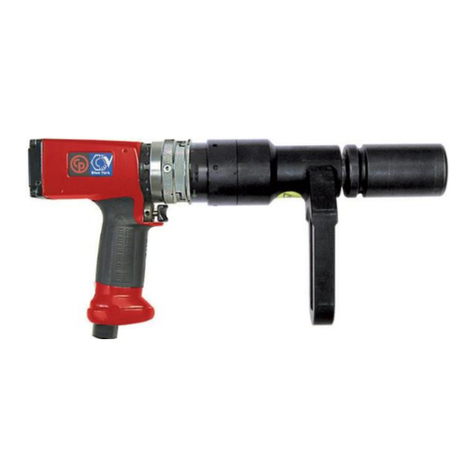
Chicago Pneumatic
Chicago Pneumatic CP7600C Series Operator's manual
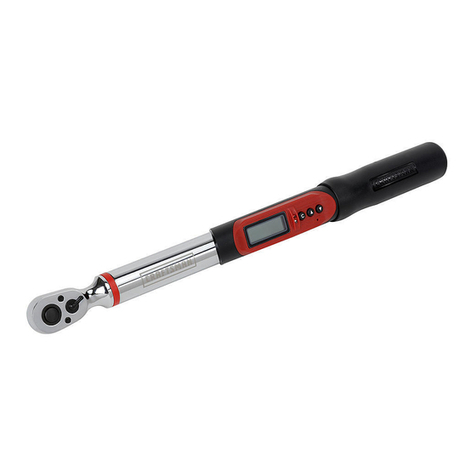
Craftsman
Craftsman 13235 User instructions

Bosch
Bosch Professional GSR 1080-LI Original instructions
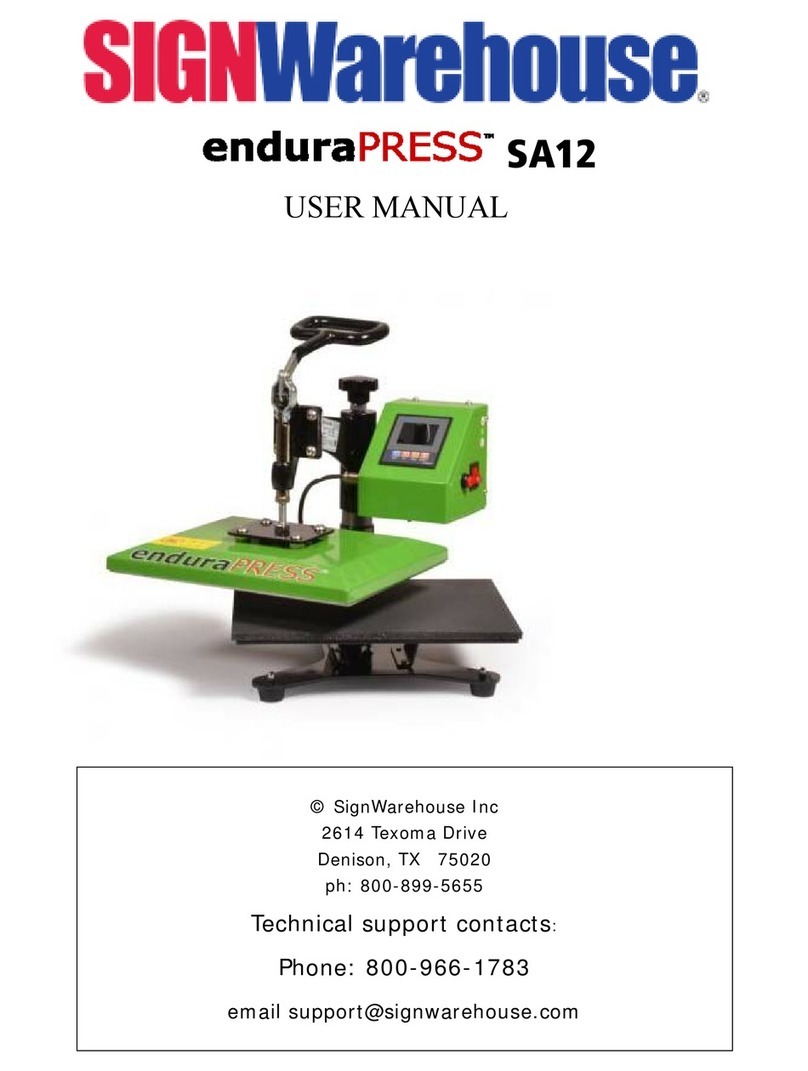
SignWarehouse.com
SignWarehouse.com EnduraPRESS SA12 user manual
